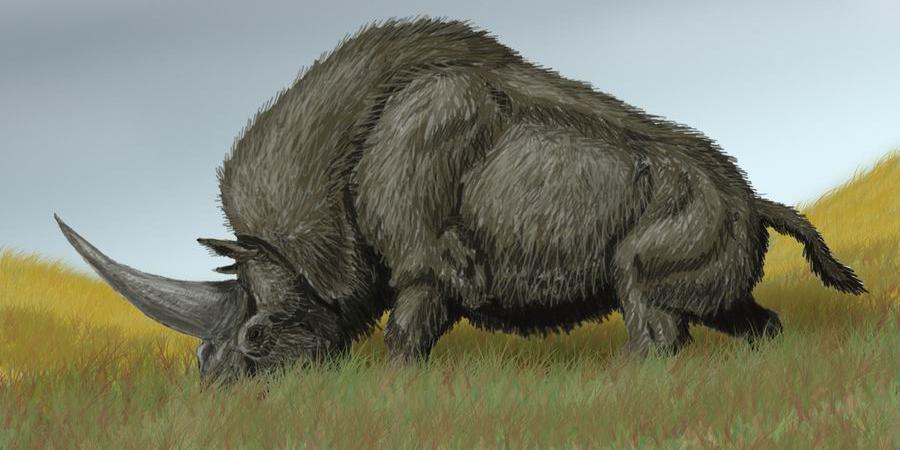Megafaunal evolution and extinction

Image: An artist’s reconstruction of Elasmotherium sibiricum, a giant, shaggy Ice Age rhinoceros known as the Siberian unicorn.
Credit: DiBgd/Wikimedia Commons
Over the last 50,000 years, the majority of megafauna - animal species larger than around 44kg - from around the world have become extinct.
This lost diversity includes:
- Giant ground sloths from South America
- Dire wolves
- Mammoths
- Sabre-toothed cats from North America
- Giant kangaroos
- Marsupial lions
- Thylacines from Australia.
At the Australian Centre for Ancient DNA (ACAD), we use DNA preserved in bones and teeth to reconstruct the genomes of these extinct species, allowing us to better understand their evolution and roles in past ecosystems. In addition, this ancient DNA allows us to learn about past population sizes, migrations, and inter-species hybridisation.
By combining ancient DNA data with radiocarbon dating, stable isotope analysis, and palaeontological data we can also infer the responses of animal populations to climate and environmental change in the past, and potentially determine what ultimately caused the extinction of the megafauna.
Honours projects available in this area will be predominantly analytical/bioinformatics-based, with the option of a limited wet-lab component.

Supervisor
Associate Professor Bastien Llamas
Research area: Megafaunal evolution and extinction - Australian Centre for Ancient DNA (ACAD)
Recommended honours enrolment: Honours in Evolution and Palaeobiology
